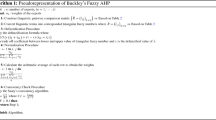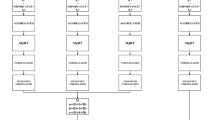Abstract
Nowadays, decision-making process is faced with different challenges. There are many aspects that must be considered and planned, especially programs in the automotive industry that is associated with human vital factors are not structured. Therefore, managerial and engineering techniques should be used to solve the existing problems. In this regard, the process failure mode and effects nalysis (PFMEA) technique is one of the ways to assess the potential product or process failures and their effects, designs from the beginning to the end of the product life cycle, and identifies actions to eliminate the failures or reduce their effects. The well-known method for piriortizing these failures is risk priority number (RPN). Because the RPN has problems in prioritization of critical processes, a new approach is needed to remove these problems.Thus, in a real case study, first PFMEA technique has been implemented with the help of multidisciplinary teams for the parts of Peugeot 206, Peugeot 405 and Samand (three types of automobiles produced by Iran-khodro company) and affected factors have been obtained as an interval. Then, interval data envelopment analysis (DEA) have been used to prioritize and analyze all failures that are identified by the PFMEA technique for every part. Finally, by combining the results of the interval DEA and Grey relational analysis (GRA), the manufacturing processes are prioritized based on their criticality. Moreover, the proposed actions for all the items associated with each process are provided to prevent some potential failures. The results show that pouring and core making are the most crucial processes in this study, respectively. According to the proposed approach, the decision makers may determine critical processes and plan and do appropriate actions for removing failures or reducing their effects.


Similar content being viewed by others
References
Banker, R. D., Charnes, A., & Cooper, W. W. (1984). Some models for estimating technical and scale inefficiencies in data envelopment analysis. Management Science, 30(9), 1078–1092.
Chang, T. C., & Lin, S. J. (1999). Grey relation analysis of carbon dioxide emissions from industrial production and energy uses in Taiwan. Journal of Environmental Management, 56(4), 247–257.
Chang, C. L., Liu, P. H., & Wei, C. C. (2001). Failure mode and effects analysis using grey theory. Integrated Manufacturing Systems, 12(3), 211–216.
Chang, D. S., & Paul Sun, K. L. (2009). Applying DEA to enhance assessment capability of FMEA. International Journal of Quality and Reliability Management, 26(6), 629–643.
Chang, D. S., Chung, J. H., Sun, K. L., & Yang, F. C. (2012). A novel approach for evaluating the risk of health care failure modes. Journal of Medical Systems, 36(6), 3967–3974.
Chang, K. H., Chang, Y. C., & Tsai, I. T. (2013). Enhancing FMEA assessment by integrating grey relational analysis and the decision making trial and evaluation laboratory approach. Engineering Failure Analysis, 31, 211–224.
Charnes, A., Cooper, W. W., & Rhodes, E. (1978). Measuring the efficiency of decision making units. European Journal of Operational Research, 2(6), 429–444.
Chen, M. F., & Tzeng, G. H. (2004). Combining grey relation and TOPSIS concepts for selecting an expatriate host country. Mathematical and Computer Modelling, 40(13), 1473–1490.
Chin, K. S., Wang, Y. M., Poon, G. K. K., & Yang, J. B. (2009). Failure mode and effects analysis by data envelopment analysis. Decision Support Systems, 48(1), 246–256.
Deng, J. L. (1989). Introduction to grey system theory. The Journal of Grey System, 1(1), 1–24.
Despotis, D. K., & Smirlis, Y. G. (2002). Data envelopment analysis with imprecise data. European Journal of Operational Research, 140(1), 24–36.
Emrouznejad, A., & De Witte, K. (2010). COOPER-framework: A unified process for non-parametric projects. European Journal of Operational Research, 207(3), 1573–1586.
Friedman, L., & Sinuany-Stern, Z. (1998). Combining ranking scales and selecting variables in the DEA context: The case of industrial branches. Computers and Operations Research, 25(9), 781–791.
Fung, C. P. (2003). Manufacturing process optimization for wear property of fiber-reinforced polybutylene terephthalate composites with grey relational analysis. Wear, 254(3), 298–306.
Garcia, P. A., & Schirru, R. (2005). A fuzzy data envelopment analysis approach for FMEA. Progress in Nuclear Energy, 46(3), 359–373.
Garcia, P. A. D. A., Junior, L., Curty, I., & Oliveira, M. A. (2013). A weight restricted DEA model for FMEA risk prioritization. Production, 23(3), 500–507.
Geum, Y., Cho, Y., & Park, Y. (2011). A systematic approach for diagnosing service failure: Service-specific FMEA and grey relational analysis approach. Mathematical and Computer Modelling, 54(11), 3126–3142.
Girginer, N., Köse, T., & Uçkun, N. (2015). Efficiency analysis of surgical services by combined use of data envelopment analysis and gray relational analysis. Journal of Medical Systems, 39(5), 1–9.
He, Z., Zhu, P. F., & Park, S. H. (2012). A robust desirability function method for multi-response surface optimization considering model uncertainty. European Journal of Operational Research, 221(1), 241–247.
He, Y., Chen, H., He, Z., Wang, G., & Zhou, L. (2014). Scaled prioritized aggregation operators and their applications to decision making. Soft Computing. doi:10.1007/s00500-014-1562-8.
Jenkins, L., & Anderson, M. (2003). A multivariate statistical approach to reducing the number of variables in data envelopment analysis. European Journal of Operational Research, 147(1), 51–61.
Jolai, F., Jahangoshai-Rezaee, M., & Vazifeh, A. (2009). Multi-criteria decision making for assembly line balancing. Journal of Intelligent Manufacturing, 20(1), 113–121.
Ju-Long, D. (1982). Control problems of grey systems. Systems and Control Letters, 1(5), 288–294.
Kao, C., & Liu, S. T. (2000). Fuzzy efficiency measures in data envelopment analysis. Fuzzy Sets and Systems, 113(3), 427–437.
Kuo, Y., Yang, T., & Huang, G. W. (2008). The use of grey relational analysis in solving multiple attribute decision-making problems. Computers and Industrial Engineering, 55(1), 80–93.
Lin, S. J., Lu, I. J., & Lewis, C. (2007). Grey relation performance correlations among economics, energy use and carbon dioxide emission in Taiwan. Energy Policy, 35(3), 1948–1955.
Liu, S., & Lin, Y. (2006). Grey information: Theory and practical applications. London: Springer Science & Business Media.
Liu, H. C., You, J. X., Fan, X. J., & Lin, Q. L. (2014). Failure mode and effects analysis using D numbers and grey relational projection method. Expert Systems with Applications, 41(10), 4670–4679.
Lovell, C. K., & Pastor, J. T. (1999). Radial DEA models without inputs or without outputs. European Journal of Operational Research, 118(1), 46–51.
Oh, H. S., Moon, S. K., & Yoo, J. S. (2013). Service-oriented FMEA and grey relational analysis based approach to service reliability assessment. International Journal of Advancements in Computing Technology, 5(12), 225.
Pillay, A., & Wang, J. (2003). Modified failure mode and effects analysis using approximate reasoning. Reliability Engineering and System Safety, 79(1), 69–85.
Rakesh, R., Jos, B. C., & Mathew, G. (2013). FMEA analysis for reducing breakdowns of a sub system in the life care product manufacturing industry. International Journal of Engineering Science and Innovative Technology, 2(2), 218–225.
Ramanathan, R. (2003). An introduction to data envelopment analysis: A tool for performance measurement. New Delhi: Sage Publications.
Thivel, P. X., Bultel, Y., & Delpech, F. (2008). Risk analysis of a biomass combustion process using MOSAR and FMEA methods. Journal of Hazardous Materials, 151(1), 221–231.
Trafialek, J., & Kolanowski, W. (2014). Application of failure mode and effect analysis (FMEA) for audit of HACCP system. Food Control, 44, 35–44.
Tzeng, G. H., & Huang, J. J. (2011). Multiple attribute decision making: Methods and applications. New York: CRC Press.
Wang, Y. M., Greatbanks, R., & Yang, J. B. (2005). Interval efficiency assessment using data envelopment analysis. Fuzzy Sets and Systems, 153(3), 347–370.
Wu, H. H. (2002). A comparative study of using grey relational analysis in multiple attribute decision making problems. Quality Engineering, 15(2), 209–217.
Zimmermann, H. J. (2001). Fuzzy set theory—And its applications. New York: Springer Science & Business Media.
Author information
Authors and Affiliations
Corresponding author
Rights and permissions
About this article
Cite this article
Baghery, M., Yousefi, S. & Rezaee, M.J. Risk measurement and prioritization of auto parts manufacturing processes based on process failure analysis, interval data envelopment analysis and grey relational analysis. J Intell Manuf 29, 1803–1825 (2018). https://doi.org/10.1007/s10845-016-1214-1
Received:
Accepted:
Published:
Issue Date:
DOI: https://doi.org/10.1007/s10845-016-1214-1




